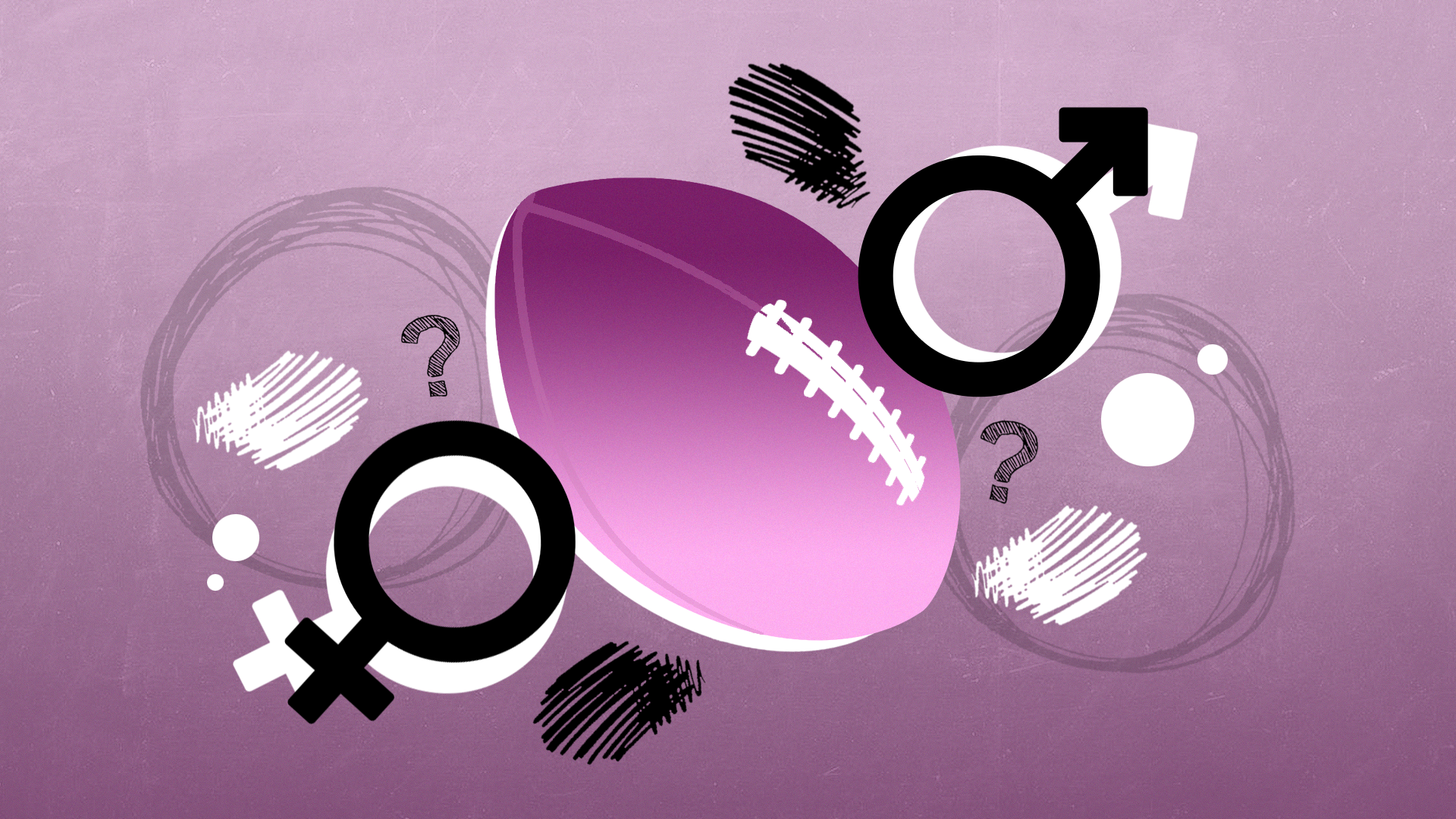World Rugby’s controversial decision to ban trans women from competing highlights one of the thorniest issues of our time.
Last week trans women were informed that they will soon be prevented from participating in professional women’s rugby due to safety concerns. The recommendation from World Rugby evidently comes after a review of the latest peer-reviewed research indicating that trans women are ‘not fit for the purpose.’
This unprecedented move follows a ground-breaking transgender participation workshop conducted by World Rugby in February, where experts in socio-ethics, science, medicine, and law were invited to present their research and opinions on the continued presence of transgender women in the contact sport. Presentations were posted online in the interest for transparency.
According to World Rugby, findings unearthed at the conference led them to believe that a reduction in testosterone – which, in line with the International Olympic Committee (IOC) guidelines, allows trans women to compete in female divisions if suppression began at least 12 months prior – ‘does not lead to a proportionate reduction in mass, muscle mass, strength, or power.’
The predictable furore that followed from the LGBT+ community was immediate, and understandable. Woke Twitter was agog, with prominent trans activists and rugby clubs alike decrying the decision as a misstep that sets a dangerous precedent of discrimination. England’s Rugby Football Union even stated it will defy the recommendation and continue to allow trans women to play competitively.
The WFTDA supports @rugbyforall's fight to create a safe, welcoming space for trans women in rugby. @worldrugby's ban on trans women athletes is unethical and unequitable, and we support their journey to #TackleTransphobia.#RugbyForAll pic.twitter.com/6jPAZnfcE6
— WFTDA (@WFTDA) October 16, 2020
However, many have also come out in support of World Rugby. Former Olympic swimmer Sharron Davies praised the ‘fair’ decision, and trans woman columnist Diana Thomas wrote an op-ed defending the ban in The Telegraph.
The thorniness endemic to this issue is unique to dialogues that typically include the word ‘ban’ in conjunction with ‘trans’ in that there isn’t a clear-cut dichotomy between liberals and conservatives here, or even between trans and cisgendered people. The progressive and the ‘regressive’ narratives are at evens, or at least undecided, on some crucial points of this debate such that actual trans women have even found themselves agreeing with Piers Morgan.
The presence of trans women in competitive sports is such a hard nut to crack because the harm equations swing both ways. Exclusion hurts trans athletes, inclusion potentially harms cisgendered female athletes, and the ideological opposition the argument encourages between those two camps hurts women everywhere.
On the one hand, the banning of trans women from international competitions sets a clear precedent of discrimination in sports at all levels, right down to the schoolyard. As stated by the IOC in their own inclusion rationale, sport is a human right, and there’s mountains of evidence that exclusion from formative activities from a young age is devastating for a trans person’s mental health and self-image. Inclusion is inarguably the path to normalisation.
By the same token, there’s been a number of instances in the past few years of cisgendered female athletes bested or injured by trans athletes in a manner they claim was unfair. Sportspeople can train their whole life for an opportunity to compete at high levels, and fears that some cis females could miss out on sought after positions or medals in fields where strength and size are advantages (like rugby) due to the presence of people who were born with male sex organs is not entirely baseless.
‘There is no scientific evidence to support World Rugby’s position in exclusion of transwomen from contact rugby’.
Here is the evidence cited by the IOC in 2003, when they first proposed that inclusion of transwomen in female sport is fair. pic.twitter.com/L4ODUk9iJO
— Emma Hilton (@FondOfBeetles) October 15, 2020
The science World Rugby used to make its decision does paint a pretty clear, if incomplete, picture. Whilst it’s common knowledge that males on average are bigger, stronger, and faster than females, with bigger muscles, hearts, lungs, and stronger bones and ligaments, there’s a misconception that most of these differences somewhat melt away at a professional level where everyone, as a rule, is bigger, stronger, and faster than average. In fact, the opposite is true.
Stats from amateur sporting leagues at British high schools show that even the most talented professional female athletes would lose to top performing male teenagers, most of whom haven’t yet finished puberty.
If you compare the current English Under-17 boys’ records for all the athletics events from 100m to 1500m to the winning times of the women at the 2016 Olympics, every event except the 100m hurdles would’ve been dominated by the schoolboys. And most races wouldn’t even have been close.
For example, the Under-17 boys’ 800m record, set in 2017 by Max Burgin, stands at 1:50.24. The 2016 Olympic women’s 800m was won by Caster Semenya, who is the most controversial female athlete on the planet because she is allegedly ‘too much like a man’, in 1:55.38.
It’s a similar story for the rugby field. Emma Hilton, a biologist at the University of Manchester, presented data to World Rugby during February’s conference on strength and speed in top rugby players of both sexes. Both metrics showed only a fractional overlap between the two: even the bulkiest male players were only marginally slower than the nimblest female ones, and the males with the lowest muscle mass were still able to lift 10% more than the strongest women.




















